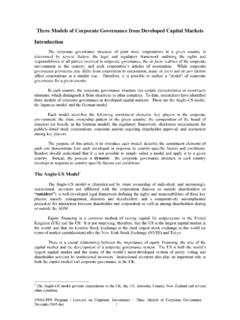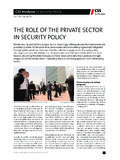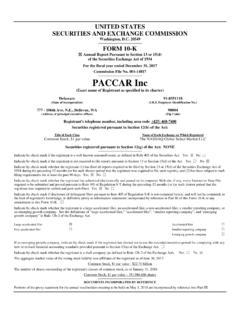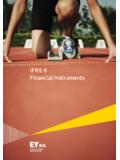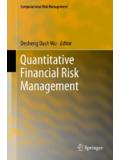Transcription of Report on the Misuse of Corporate Vehicles for …
1 ISBN 92-64-19543-221 2001 13 1 the Corporate VeilUSING Corporate ENTITIES FOR ILLICIT PURPOSES Behind theCorporate VeilUSING Corporate ENTITIESFOR ILLICIT PURPOSESB ehind the Corporate VeilUSING Corporate ENTITIES FOR ILLICIT PURPOSESC orporate entities underpin most commercial and entrepreneurial activities in market-basedeconomies and have contributed immensely to growing prosperity worldwide over recentdecades. Increasingly, however, governments and regulatory bodies have realised that Corporate entities ranging from corporations and trusts to foundations and partnerships areoften misused for money laundering, bribery and corruption, shielding assets from creditors, tax evasion, self-dealing, market fraud, and other illicit activities.
2 Prepared against this background, the OECD Report Behind the Corporate Veil: UsingCorporate Entities for Illicit Purposesopens ways to prevent and combat the Misuse of Corporate entities. The Report shows that the types of Corporate entities misused most frequently are those that provide the greatest degree of anonymity to their beneficialowners. With that in mind, the Report offers governments and other relevant authorities amenu of policy options for obtaining information on the beneficial ownership and control ofcorporate entities in order to combat their Misuse for illicit purposes.
3 This Report was prepared by the OECD Steering Group on Corporate Governance andderestricted by the Council under the title Report on the Misuse of Corporate Vehicles forIllicit Purposes. -:HSTCQE=V^ZYXV:OECD's books, periodicals and statistical databases are now available via ,our online book is available to subscribers to the following SourceOECD themes:Finance & Investment/Insurance & PensionsGovernanceTaxationAsk your librarian for more details of how to access OECD books online, or write to us at OECD, 2001. Software: 1987-1996, Acrobat is a trademark of rights reserved.
4 OECD grants you the right to use one copy of this Program for your personal use reproduction, lending, hiring, transmission or distribution of any data or software isprohibited. You must treat the Program and associated materials and any elements thereof like any othercopyrighted requests should be made to:Head of Publications Service,OECD Publications Service,2, rue Andr -Pascal, 75775 Paris Cedex 16, Corporate VeilUSING Corporate ENTITIESFOR ILLICIT PURPOSESORGANISATION FOR ECONOMIC CO-OPERATION AND DEVELOPMENTORGANISATION FOR ECONOMIC CO-OPERATIONAND DEVELOPMENT Pursuant to Article 1 of the Convention signed in Paris on 14th December 1960,and which came into force on 30th September 1961, the Organisation for EconomicCo-operation and Development (OECD) shall promote policies designed.
5 To achieve the highest sustainable economic growth and employment and arising standard of living in Member countries, while maintaining financialstability, and thus to contribute to the development of the world economy; to contribute to sound economic expansion in Member as well as non-membercountries in the process of economic development; and to contribute to the expansion of world trade on a multilateral, non-discriminatory basis in accordance with international original Member countries of the OECD are Austria, Belgium, Canada,Denmark, France, Germany, Greece, Iceland, Ireland, Italy, Luxembourg, theNetherlands, Norway, Portugal, Spain, Sweden, Switzerland, Turkey, the UnitedKingdom and the United States.
6 The following countries became Memberssubsequently through accession at the dates indicated hereafter: Japan(28th April 1964), Finland (28th January 1969), Australia (7th June 1971), NewZealand (29th May 1973), Mexico (18th May 1994), the Czech Republic(21st December 1995), Hungary (7th May 1996), Poland (22nd November 1996),Korea (12th December 1996) and the Slovak Republic (14th December 2000). TheCommission of the European Communities takes part in the work of the OECD(Article 13 of the OECD Convention).
7 Publi en fran ais sous le titre :Au-del des apparencesL UTILISATION DES ENTIT S JURIDIQUES A DES FINS ILLICITES OECD 2001 Permission to reproduce a portion of this work for non-commercial purposes or classroomuse should be obtained through the Centre fran ais d exploitation du droit de copie (CFC),20, rue des Grands-Augustins, 75006 Paris, France, tel. (33-1) 44 07 47 70, fax (33-1) 46 34 67 19,for every country except the United States. In the United States permission shouldbe obtained through the Copyright Clearance Center, Customer Service, (508)750-8400,222 Rosewood Drive, Danvers, MA 01923 USA, or CCC Online: All otherapplications for permission to reproduce or translate all or part of this book should be madeto OECD Publications, 2, rue Andr -Pascal, 75775 Paris Cedex 16, France.
8 3 OECD 2001 ForewordAlmost every economic crime involves the Misuse of Corporate entities money launderers exploit cash-based businesses and other legal Vehicles todisguise the source of their illicit gains, bribe-givers and recipients conduct theirillicit transactions through bank accounts opened under the names of corporationsand foundations, and individuals hide or shield their wealth from tax authoritiesand other creditors through trusts and partnerships, to name but a few recent years, the issue of the Misuse of Corporate entities for illicit pur-poses has drawn increasing attention from policy makers and other Corporate entities have been credited for their immense contribution to ris-ing prosperity in market-based economies, there has been growing concern thatthese Vehicles may be misused for illicit purposes, such as money laundering,bribery and corruption, shielding assets from creditors, illicit tax practices, marketfraud, and other illicit activities.
9 Perhaps more worrisome is the risk that the mis-use of Corporate entities may threaten financial stability from a market light of these concerns, the Financial Stability Forum (FSF) asked the OECDin May 2000 to undertake the drafting of a Report to develop mechanisms toreduce the vulnerability of Corporate Vehicles to Misuse for illicit purposes. In par-ticular, the FSF stressed the importance of ensuring that the authorities in eachjurisdiction have the ability to obtain and share information on the beneficial own-ership and control of Corporate Vehicles established in their jurisdictions.
10 Thisreport responds to that OECD Steering Group on Corporate Governance assumed overall respon-sibility for the drafting of this Report and established an ad hoc experts group toguide the OECD Secretariat in the drafting process. Upon its completion andadoption by the Steering Group, the Report on the Misuse of Corporate Vehiclesfor Illicit Purposes was submitted to the OECD Ministers, G-7 Finance Ministers,and FSF. At their annual meeting in May 2001, the OECD Ministers welcomed thereport, adding that it will contribute to efforts to combat corruption and moneylaundering.










